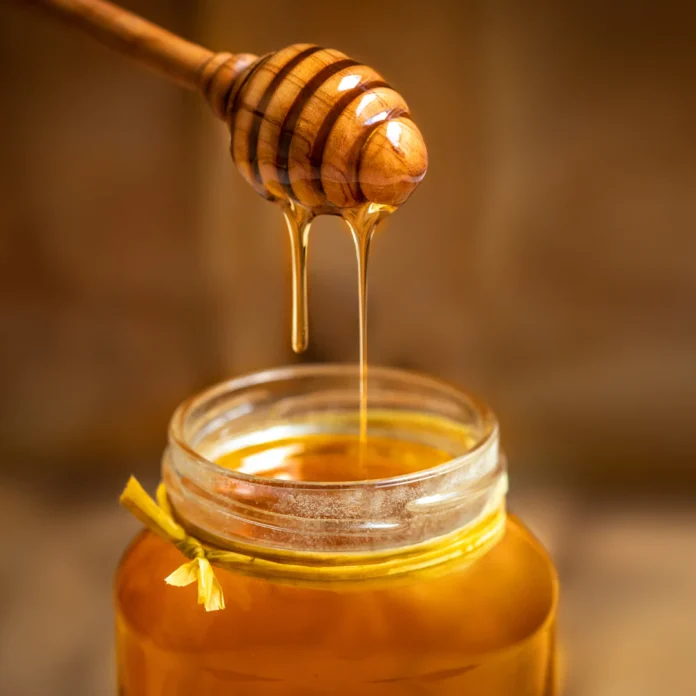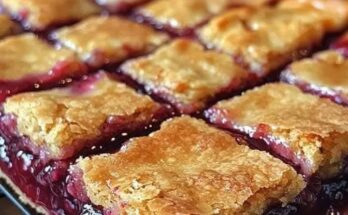Honey has long been treasured for its natural sweetness and health-boosting properties. From soothing sore throats to providing a natural energy boost, real honey is a true gift from nature. But in today’s market, not every golden liquid you see on store shelves is the real deal. Fake honey is increasingly common, and what’s worse — it often comes with a steep price tag.
So how can you protect yourself from being tricked by counterfeit honey?
The good news is, you don’t need a lab or fancy tools to test it. All it takes is a clear bottle, a quick shake, and a flip — a surprisingly simple method that reveals a lot more than you’d think.
Let’s walk through this clever trick and a few other easy ways you can spot fake honey before it ends up in your pantry.
Why Fake Honey Is Everywhere — And Why It Matters
As demand for honey rises, producers are under increasing pressure to supply more — but real honey production takes time, effort, and care. Bees don’t work on anyone else’s schedule, and nature can’t be rushed.
That’s why some unscrupulous sellers turn to cheap additives like corn syrup, sugar water, or rice syrup to stretch their honey supply and boost profits. While these imitations may look similar and even taste sweet, they lack the nutrition and medicinal value of real honey.
Worse yet, these fakes often come with misleading labels and high price tags — meaning you’re paying full price for a product that’s not what it claims to be.
But don’t worry — nature left us clues.
Test #1: Shake and Flip — The Bubble Method
When it comes to spotting fake honey, your first step should be the shake and flip test. You’ll be amazed at what a few seconds of movement can reveal.
Here’s how it works:
- Hold the bottle in your hand.
- Shake it up and down firmly three times.
- Turn the bottle upside down.
- Watch closely for air bubbles.
What you’re looking for:
- Real honey: After you flip the bottle, bubbles will form slowly and rise gradually to the top. These bubbles are thick and stable, and can take up to 1–2 hours to fully disappear. This slow movement is a sign of honey’s natural density and viscosity — qualities that come from real nectar and enzymes.
- Fake honey: The bubbles (if any) will rise quickly and vanish fast. Sometimes, no bubbles form at all. That’s because fake honey lacks the thick texture and natural structure of the real thing.
If your honey doesn’t pass the shake-and-flip test, leave it on the shelf.
Test #2: The Water Drop Test
Another simple and effective way to test honey at home is the water glass method. This test checks for natural consistency — something fake honey can’t replicate.
Here’s what to do:
- Fill a clear glass with water.
- Take a spoonful of honey and gently drop it into the center of the glass.
- Observe what happens as the honey hits the water.
What you’ll see:
- Real honey: It will sink to the bottom in a tight, heavy stream and settle as a clump. It will stay separate from the water for a while and dissolve slowly.
- Fake honey: It will dissolve immediately, spreading out into the water like syrup or sugar water. That’s because most fake honeys are already diluted or made from liquid sugar.
This test is a great way to see the purity of honey with your own eyes — no guesswork involved.
Test #3: Crystallization — Nature’s Signature
Here’s a fact that surprises many: real honey crystallizes, and that’s a good thing.
Many people wrongly assume that crystallized honey has gone bad. But in truth, crystallization is a natural process that happens when the glucose in honey separates from the water and forms crystals.
So what should you look for?
- Real honey will start to crystallize over time, especially when stored at cooler temperatures (below 57°F or 14°C). This crystallization can appear grainy, or you might notice a sugary texture forming near the bottom of the jar.
- Fake honey usually does not crystallize, or it stays in a syrupy, watery form indefinitely. That’s because it lacks the natural sugars and enzymes that promote crystal formation.
If your honey has natural-looking crystals, don’t throw it out — that’s actually a sign of quality!
Tip: If you prefer your honey smooth, just place the jar in warm water (not boiling) and stir gently until it liquefies again.
Bonus Test: The Thumb Test
If you have no water and no time, try the thumb test:
- Drop a small amount of honey on your thumb.
- Check if it spreads or runs.
- Real honey stays intact. It’s thick, slow-moving, and tends to stick right where you put it.
- Fake honey will spread quickly or drip, because it’s more watery.
While not as foolproof as the other methods, this can give you a quick hint when you’re on the go.
So, What Should You Do When Buying Honey?
Now that you know what to look for, keep these steps in mind when you shop:
- Always check the label. Look for “100% pure honey” and avoid products with added syrups or “honey blends.”
- Buy from local beekeepers or farmers’ markets when possible — you’ll often get better quality and support small producers.
- Inspect the bottle. If it’s clear, use the shake-and-flip test right in the store.
- Store it properly. Keep honey in a sealed container at room temperature — not in the fridge — to preserve texture and flavor.
Why Real Honey Matters
Real honey isn’t just a sweetener — it’s a natural medicine with antibacterial, antifungal, and anti-inflammatory properties. It’s been used for thousands of years to soothe coughs, heal wounds, and support digestion.
Fake honey may taste similar, but it offers none of those benefits. Worse, it may be loaded with refined sugars that spike your blood sugar and offer no nutrition.
In short, fake honey might look like the real thing — but your body knows the difference.
Trust Your Senses, Not the Label
When you buy honey, don’t just trust pretty packaging or lofty claims. Use your senses — your eyes, hands, and a little knowledge — to make sure what you’re buying is real.
From bubble tests to water drops to crystallization clues, these simple tricks can help you spot fake honey in seconds — and ensure you’re getting the health benefits, taste, and authenticity you deserve.
So the next time you shop for honey, flip the bottle upside down, and let the truth rise to the surface.



